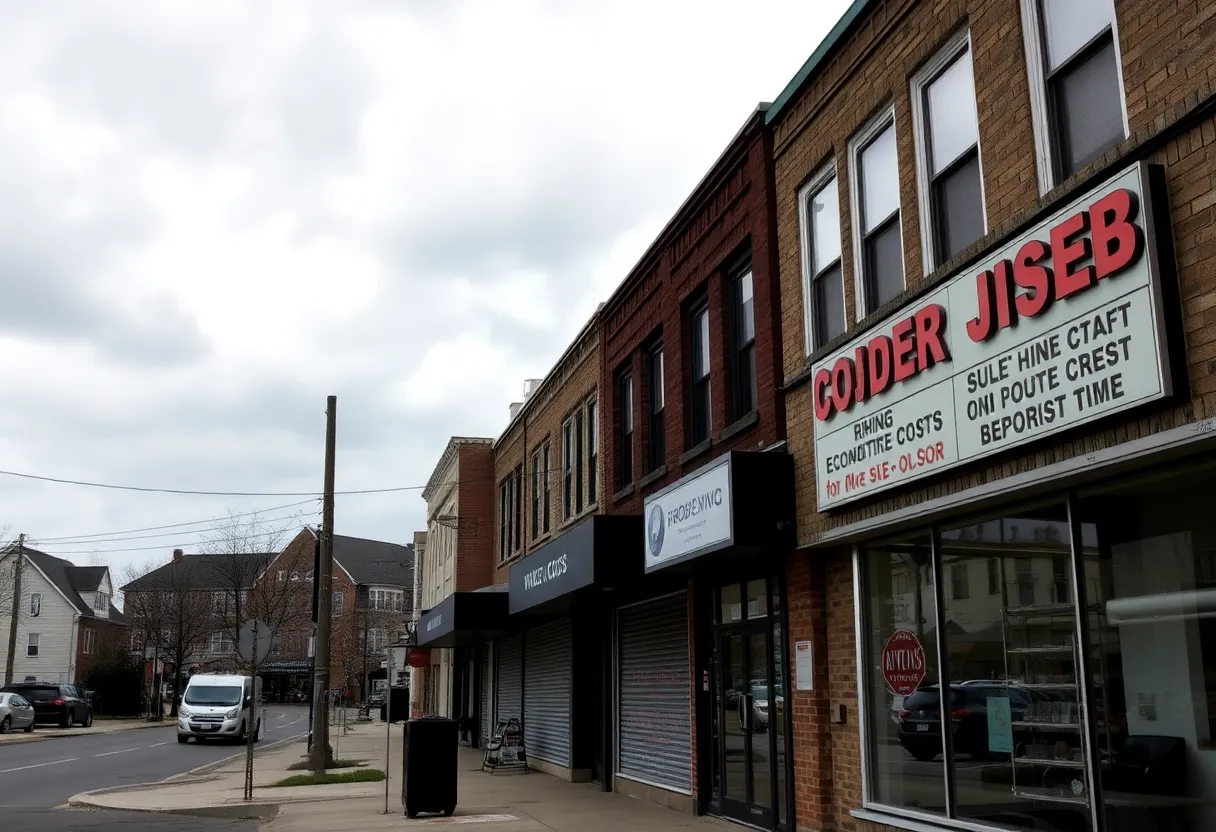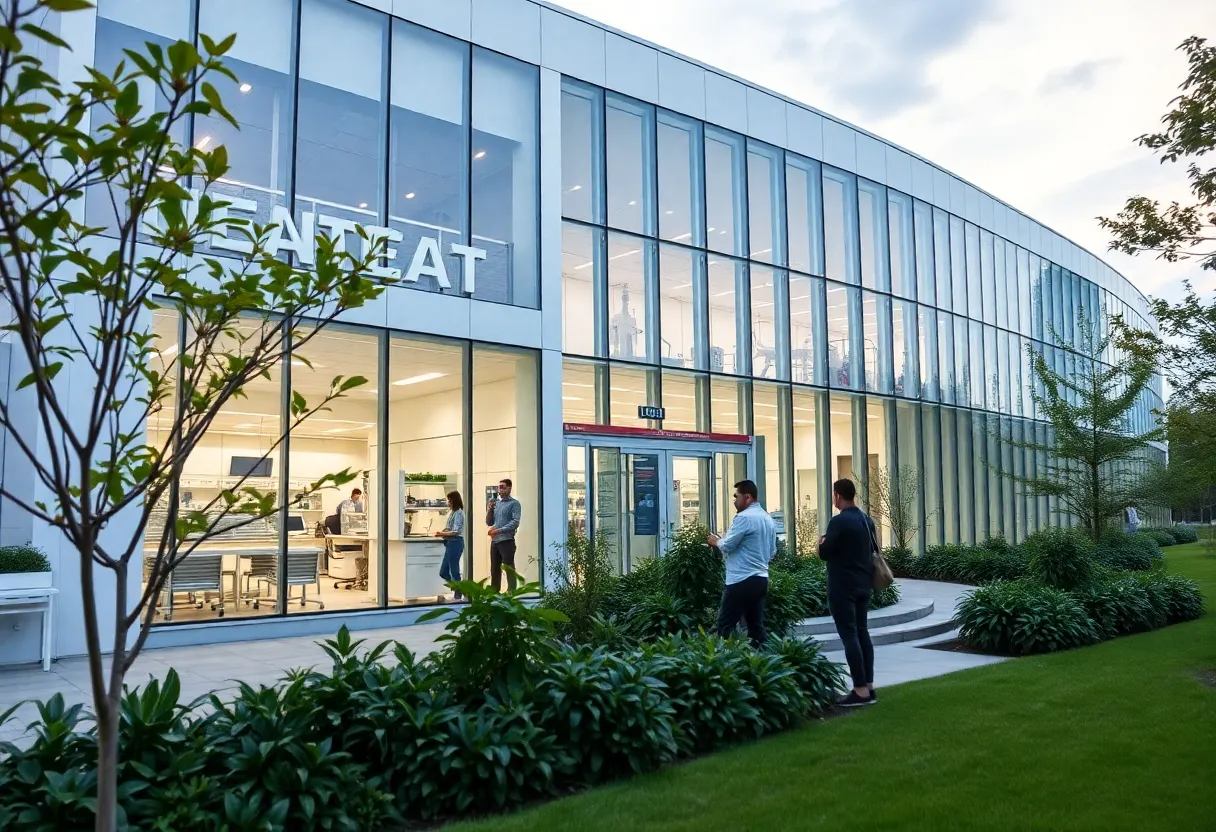News Summary
Rhode Island’s economy is in a precarious position as ongoing tariffs and fears of a recession exert pressure on financial stability. The Current Conditions Index (CCI) remains stagnant at 42, indicating no growth. Concerns over job growth and rising costs dominate discussions as tariffs, now averaging 21%, hinder progress. Additionally, a proposed surtax on high earners raises debates about tax impact on migration. Analysts predict a recovery only by 2027, exacerbated by dependency on federal funding and a decline in population. Recent job statistics show record employment alongside increasing unemployment rates, revealing further challenges ahead.
Rhode Island is facing significant economic challenges as fears of a recession loom and ongoing tariffs continue to affect the state’s financial stability, according to recent assessments from economists. Leonard Lardaro, a prominent economist from the University of Rhode Island, reported that the Current Conditions Index (CCI) for June remained stagnant at a value of 42, the same as in May and throughout much of the previous year.
The CCI serves as a crucial indicator of the state’s economic health, indicating a lack of growth and a stagnating economy. Emily Mandel, an economist from Moody’s Analytics, recently highlighted concerns regarding job growth and rising prices during a biannual Revenue and Caseload Estimating Conference. The discussions emphasized how increased tariff rates are likely to hinder the state’s economic progress.
The average tariff rate in the United States has escalated to 21%, a notable increase that hasn’t been seen since 1909. This rise is primarily attributed to reciprocal tariffs imposed during trade negotiations with China and added international tariffs. As these tariffs take effect, both consumer and business costs are expected to rise, leading to stagnation in job growth and wage increases across Rhode Island.
Forecasts from analysts suggest that the state’s economic recovery may not occur until 2027, assuming tariffs are eventually reduced. In addition to tariff impacts, Rhode Island faces substantial financial threats from federal funding cuts, particularly affecting Medicaid. The state’s reliance on federal funds is notably higher than in many other states, intensifying the potential financial strain.
Rhode Island is grappling with a population decline, as many residents are relocating to southern and mid-Atlantic states, as well as more affordable New England states like Maine and New Hampshire. Proposed legislation aiming to enact a 3% surtax on the income of the top 1% of earners has sparked heated debates about wealth taxation and its potential effects on reducing out-of-state migration.
A report from the Institute for Policy Studies suggests that despite higher taxes on millionaires in Massachusetts, the state has seen an increase in wealthy residents, implying that taxation may not be a primary reason for migration. In the housing sector, Rhode Island is experiencing a severe shortage, with rising costs for both buyers and renters largely driven by tariffs affecting the prices of building materials.
The construction industry in Rhode Island is further strained by stricter immigration policies that limit its capacity to sustain a foreign-born workforce, exacerbating the hiring challenges in the sector. Recent employment statistics indicate that Rhode Island recorded 515,600 jobs as of March 2025, the highest level on record. However, the unemployment rate has increased to 4.8%, with expectations that it may reach 5% by the end of 2025.
Moody’s Analytics has slightly revised job growth projections for Rhode Island upwards through fiscal 2030, but maintains the expectations set in earlier assessments. While housing starts remain low, they have not worsened significantly over the past six months, indicating some level of stability in the construction market.
Despite this stability, future financial projections may not adequately reflect possible federal spending cuts, which could have severe consequences for state budgets. As the May Revenue and Caseload Estimating Conference continues, it will address updates to budget surplus or deficit expectations for fiscal 2026 and beyond, shedding more light on Rhode Island’s economic outlook moving forward.
Deeper Dive: News & Info About This Topic
- Providence Business News: Lardaro Recession Fears
- GoLocalProv: Lardaro Says RI Economy Worst Monthly Showing
- Rhode Island Current: Economic Slowdown Facing Rhode Island
- Steve Ahlquist: Rhode Island’s Congressional Delegation
- Providence Journal: Most Rhode Islanders Disapprove of Trump
- Wikipedia: Rhode Island
- Google Search: Rhode Island economy
- Google Scholar: Rhode Island economic challenges
- Encyclopedia Britannica: Rhode Island
- Google News: Rhode Island tariffs

Author: STAFF HERE PROVIDENCE WRITER
The PROVIDENCE STAFF WRITER represents the experienced team at HEREProvidence.com, your go-to source for actionable local news and information in Providence, Providence County, and beyond. Specializing in "news you can use," we cover essential topics like product reviews for personal and business needs, local business directories, politics, real estate trends, neighborhood insights, and state news affecting the area—with deep expertise drawn from years of dedicated reporting and strong community input, including local press releases and business updates. We deliver top reporting on high-value events such as WaterFire, Rhode Island International Film Festival, and Rhode Island Comic Con. Our coverage extends to key organizations like the Greater Providence Chamber of Commerce and Providence Warwick Convention & Visitors Bureau, plus leading businesses in finance and manufacturing that power the local economy such as Citizens Financial Group and Textron. As part of the broader HERE network, we provide comprehensive, credible insights into Rhode Island's dynamic landscape.





